As churches grow and adapt to the era of omnipresent Wi-Fi and smartphones, social media has become one of the most effective—and necessary—ways of reaching new members.
Some church leaders are reluctant to completely welcome technology (and all of its complications) into the sanctity of their church. Learning how to effectively and comfortably use church technology and software can be a long process.
It's more important than ever, though, for churches to utilize social media, but the percentage of those that do remains alarmingly low.

As a church leader, you need buy-in not only from your leadership team but also from your congregation as a whole to enact church-wide change.
10 Powerful Church Statistics on Social Media
Let's take a look at 10 statistics that illustrate just how crucial social media is to church growth, how badly churches currently utilize it, and key takeaways to help you build (or fix) your social media strategy.
1. In 2017, more than half of Bible readers used the internet (55%) or a smartphone (53%) to access biblical texts, a significant increase from 2011 (37%, 18% respectively). (Source: Barna Group)
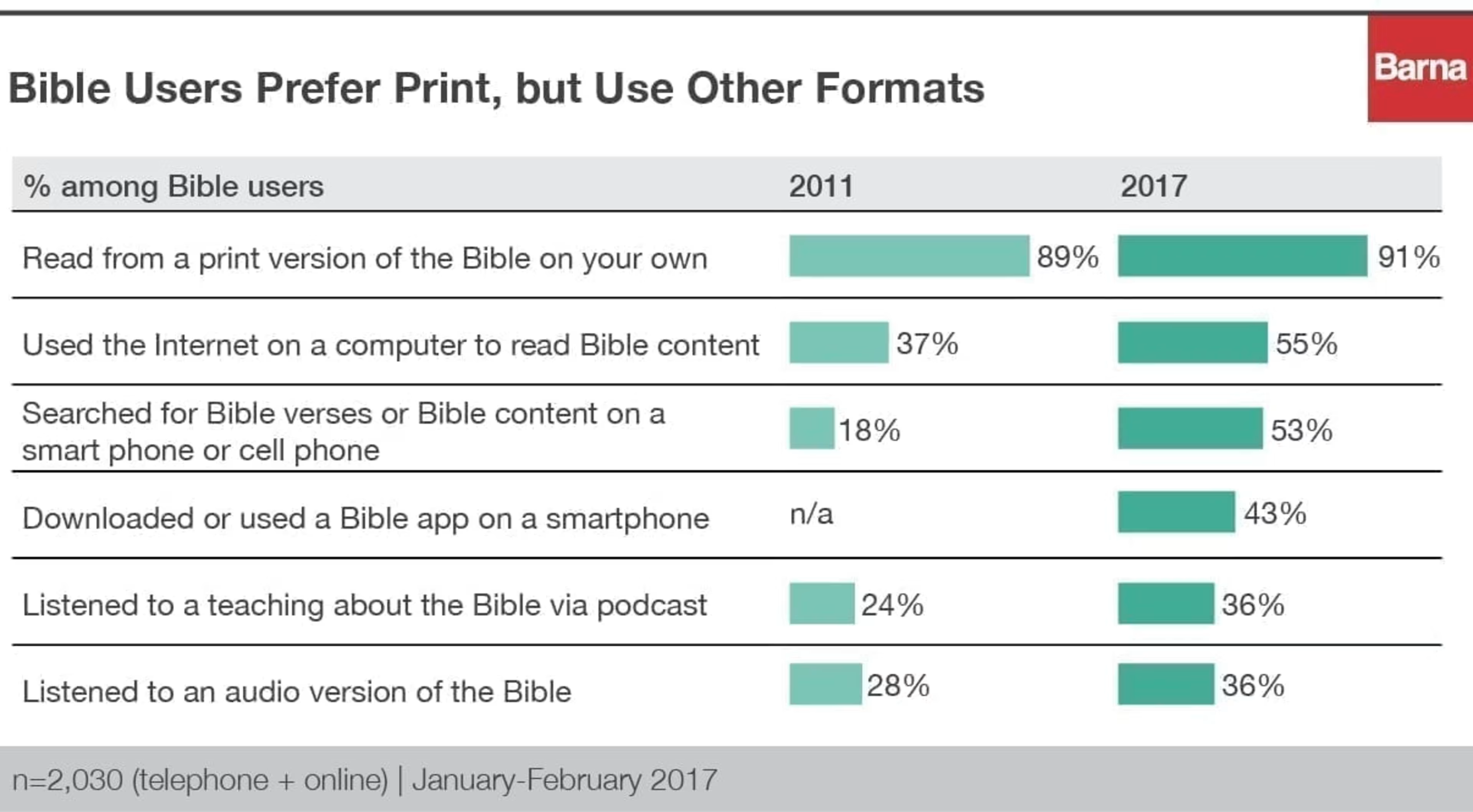
Barna Bible use data
Takeaway: Your followers are using the internet and social media as part of their worship routine in ever-increasing numbers. You need to have an active social media presence to take advantage of that fact, since that's where your audience is. Here's a guide on building your church website, and one on building your church social media strategy.
2. Almost 70% of churches offer Wi-Fi for staff and guests. A 2017 LifeWay Research study found that 68% of Protestant churches offer Wi-Fi for both groups. (Source: LifeWay Research)
LifeWay Wi-Fi breakdown
Takeaway: If your church doesn't offer Wi-Fi, you're in the minority and could be driving guests away. Here's a guide from FaithEngineer on upgrading your church's internet situation.
3. More than 70% of nonprofit communicators consider social media one of their most important communication channels. According to Nonprofit Marketing Guide's 2016 report, 71% of nonprofit communication professionals consider social media one of their most important channels, second only to their website (80%). (Source: Nonprofit Marketing Guide)
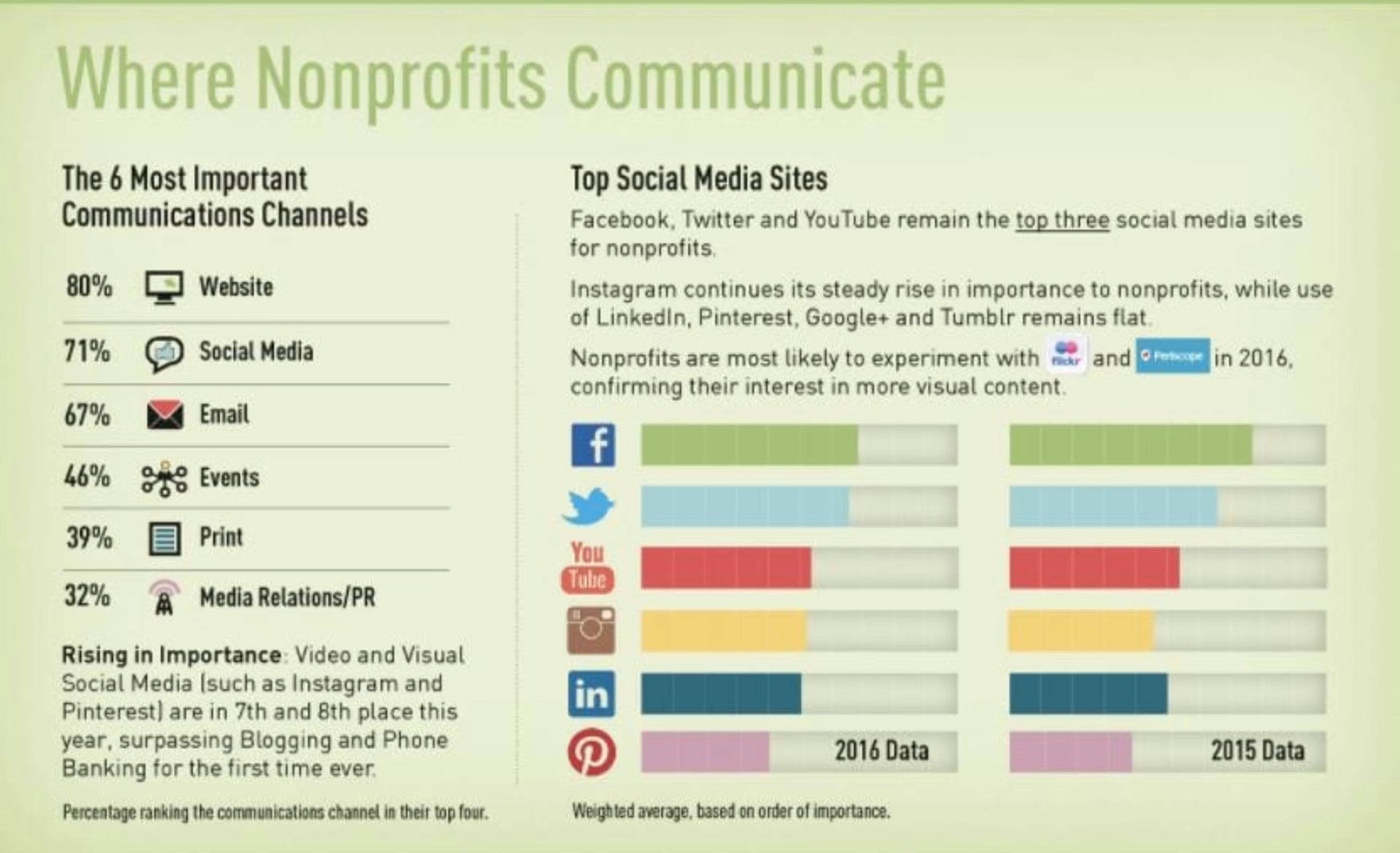
Nonprofit Marketing Guide's most important communication channels
Takeaway: If you want to successfully market your church and increase membership, social media is no longer a "nice to have" but an essential line of communication. Here are some great examples of church social media campaigns from pro church marketer Brady Shearer to get you started.
4. Almost 85% of churches use Facebook. In 2017, 84% of Protestant pastors reported that their church uses Facebook as their primary online communication tool. (Source: LifeWay Research)
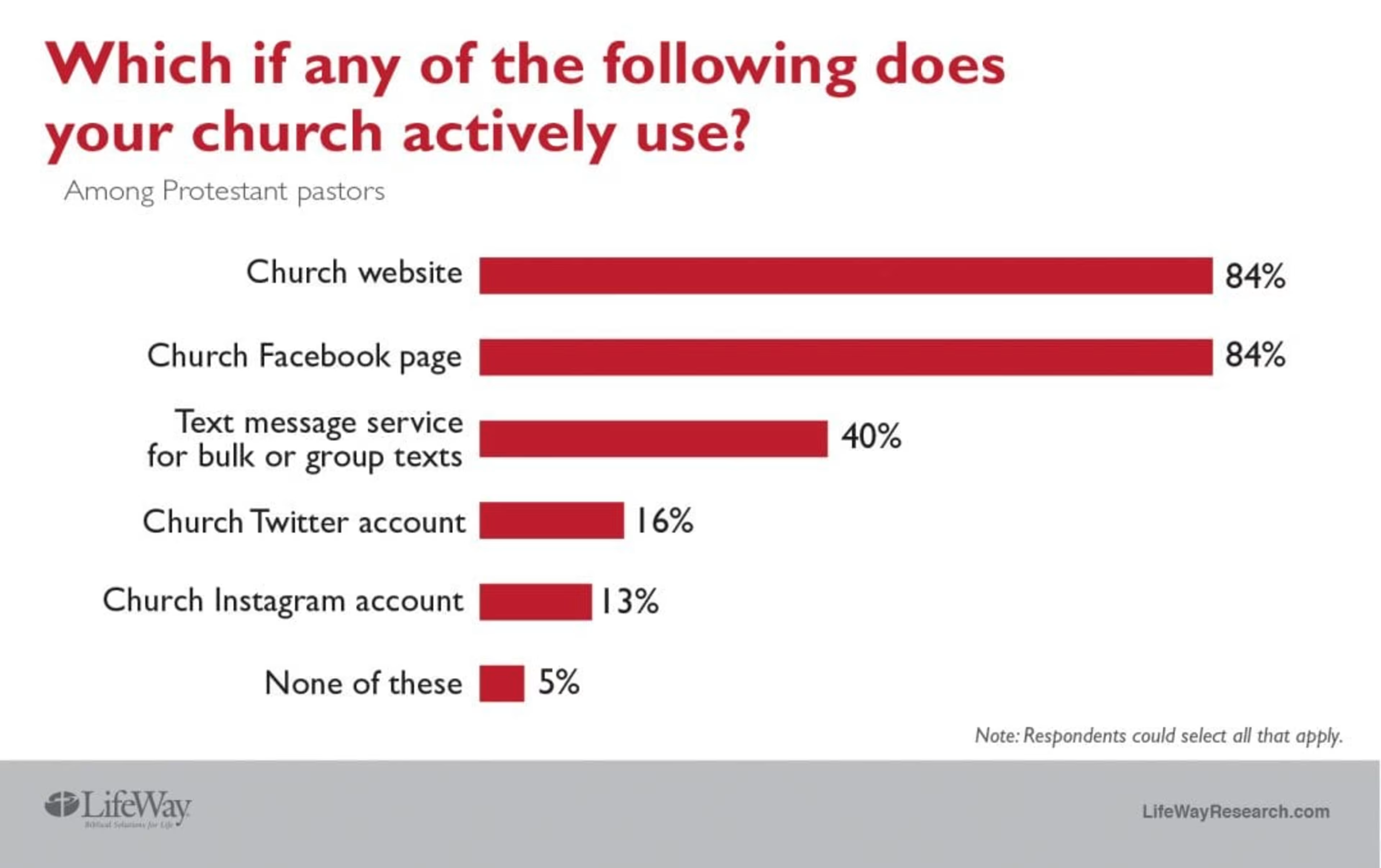
LifeWay Research church social media use
Takeaway: Facebook is the king of church social media tools. If your church doesn't have a Facebook profile set up, make that your first priority. A Facebook page doesn't just give your members a place to interact with each other, it also gives you access to a network of active, online communities where you can get ideas and ask questions. Here are 14 great church Facebook groups to join, recommended by church communications expert Katie Allred.
5. Only about 15% of churches are using Twitter and Instagram. In 2017, only 16% of Protestant pastors surveyed reported using Twitter. Even less (13%) were on Instagram. (Source: LifeWay Research)
Takeaway: Just because most churches are late to the Twitter and Instagram game doesn't mean you should be among them. According to Statista, Instagram has more than 800 million users, and Twitter had about 330 million as of the end of 2017. That's an enormous audience to tap into. Start with this Instagram guide for churches, and this one for Twitter.
6. The average click-through-rate is 115% higher for church emails that include at least one social media link. (Source: Anthony Coppedge | Focused on Church Health)
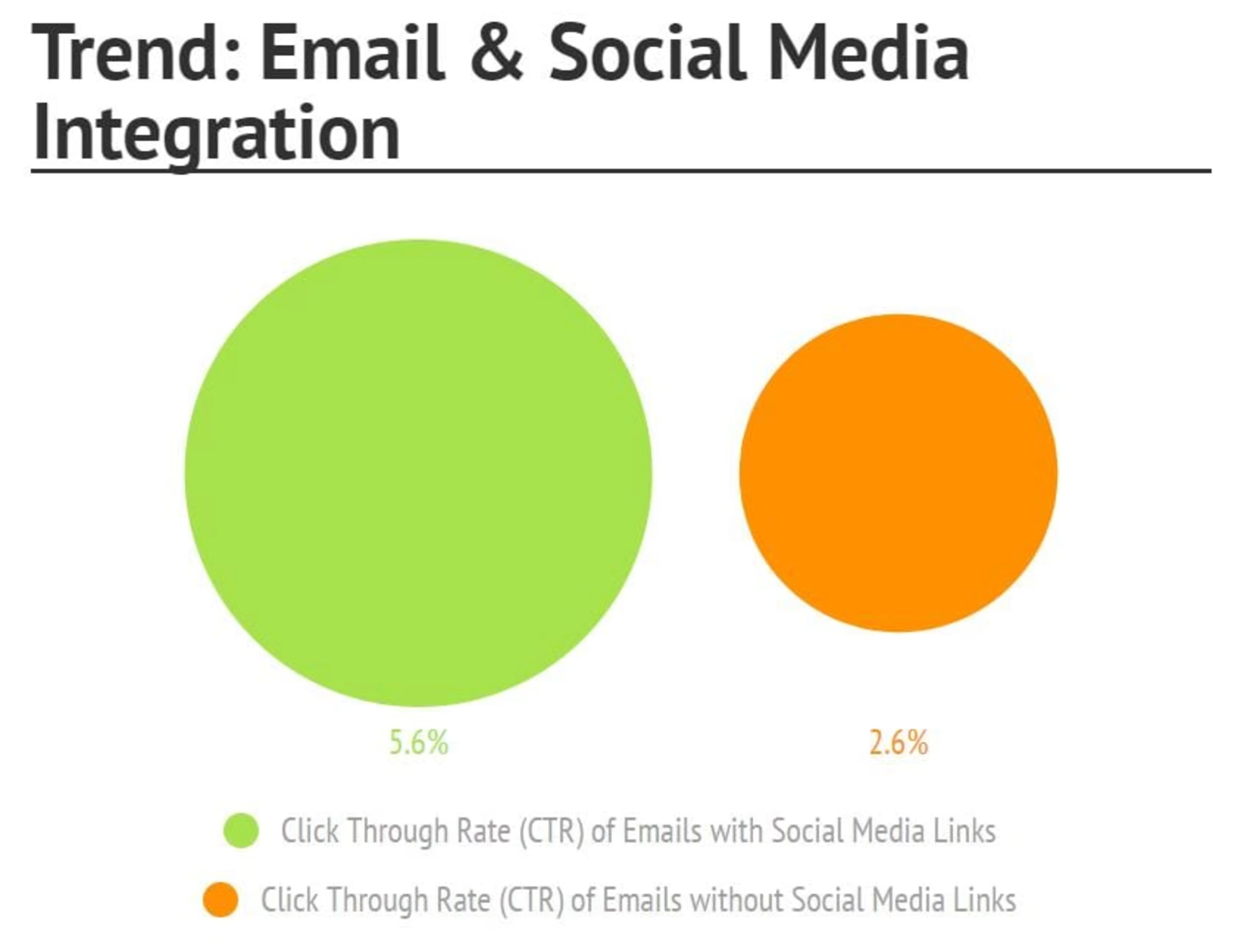
Source: Anthony Coppedge
Takeaway: This stat is a few years old, but email marketing has been around for almost 40 years so it's still relatively young. The advice here is straightforward: email communications that include a social media link are way more effective at generating clicks from readers. Don't leave them out!
7. Approximately 51% of churches claim that at least one staff member regularly blogs or posts on social media. According to Christian-centered digital advertising agency Buzzplant, in 2012 74% of churches did not have a paid staff member updating their church's social media pages. (Source: Buzzplant)
Takeaway: Consistent posting is crucial to social media success, but this task often falls to an unpaid volunteer (especially at smaller churches). The good news is that social media posting is easy; virtually anyone can do it. Give whoever runs your social media pages some guidance, such as these church social media mistakes to avoid.
8. 54% of Christian millennials watch online videos about faith or spirituality. A 2013 Barna survey found that more than half of Christian young people watch religious videos online. Among all U.S. millennials—Christian and non-Christian—the number was 31%. (Source: Barna Group)
Takeaway: Cisco predicts that by 2021, 82% of all consumer internet content will be video. The number of young people watching religious videos online will only increase. To take advantage of this, incorporate video into your social media plan. Here are seven church videos you can learn from.
9. 62% of churches use social networking to connect with individuals outside of their congregation. While an even larger number—73% according to LifeWay Research—use social media to interact with their congregation, the majority of churches with an online presence are already using social media as a growth tool. (Source: Facts & Trends)
Takeaway: Social media is a lifeline to your outside community, and one you need to use if you want your church to thrive and grow. As Efrem Smith, co-lead pastor of Bayside Church, Midtown in Sacramento, said, “To stay relevant, the church must diversify." Use tools like Facebook, Instagram, and Twitter to share pictures and news with your own church members, and attract new members by promoting events (use hashtags!).
10. 65% of Americans prefer an in-person preacher to a video sermon. About one third (35%) have no preference between live or video sermons, but less than 1% prefer a video sermon over a live sermon. (Source: LifeWay Research)
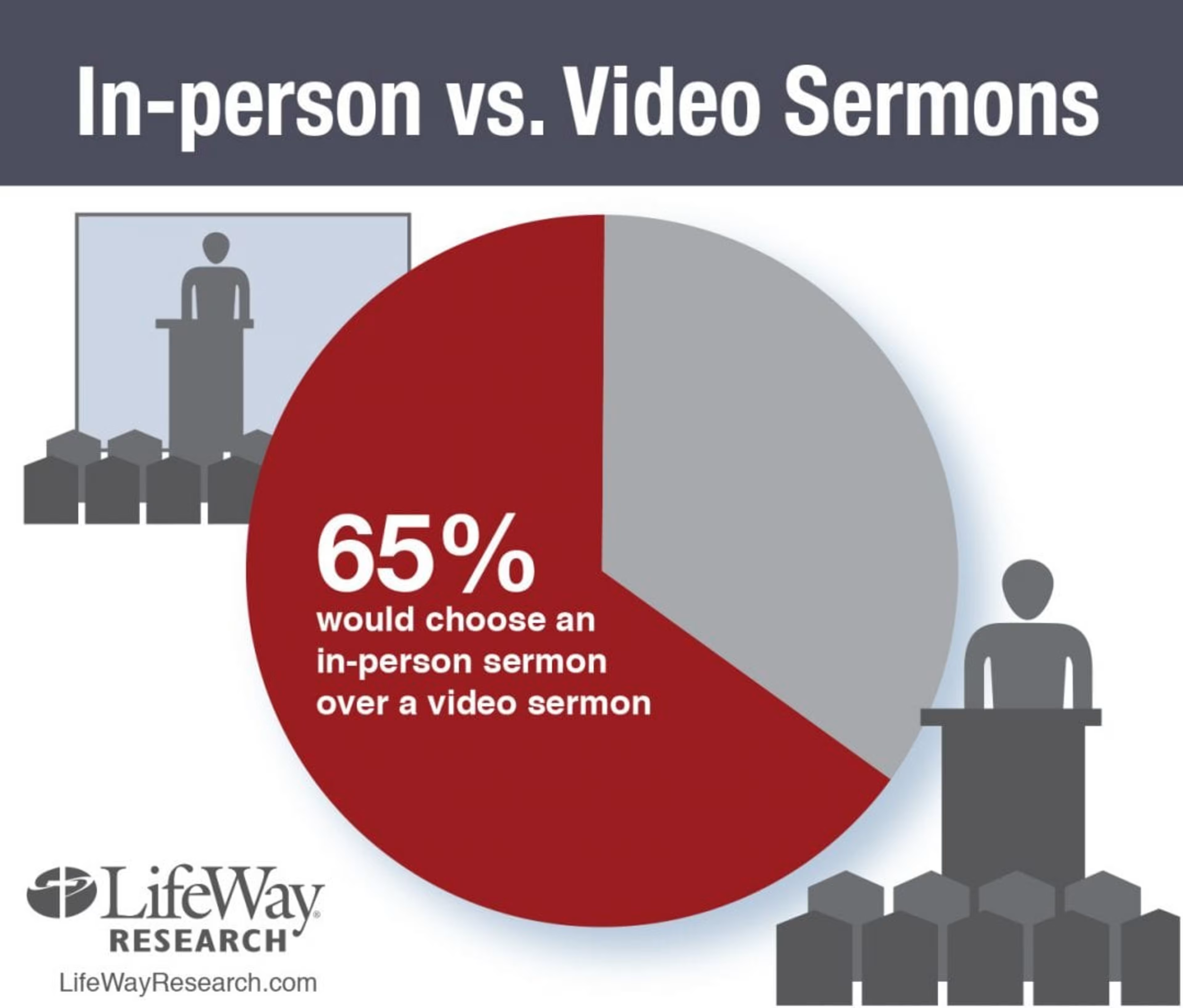
LifeWay Research live sermons vs. video sermons
Takeaway: Don't worry, video isn't taking over (yet). Don't scrap your physical location for an online only campus, but consider livestreaming your services for those who are unable to attend, traveling, or deployed. Know your congregation; run a survey to determine your church's needs before diving in.
Your church stats?
Have you stumbled across any interesting church technology research lately? We'd love to hear about it. Share it with us on Twitter @Capterra.
For additional insight on church outreach techniques, keep an eye on Capterra's church management blog.